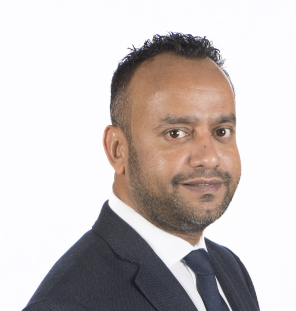


- To keep an organ “alive” outside the natural environment is a historical desire.
- Scientists were always fascinated by ex-vivo perfusion of organs with oxygenated blood.
The concept of normothermic machine perfusion to preserve the donor liver grafts is not new, and pioneering experimental studies date back to almost half a Century. The principle of normothermic liver perfusion (NMLP) is the maintenance of normal cellular metabolism at physiological temperatures (37 ℃) with oxygenated cross-matched red blood cells, and it was believed scientists and clinicians alike, that normothermic preservation would alleviate the ischaemia reperfusion injury related allograft outcomes. Following on years of scientific research on animal and human models, different perfusion techniques are currently evaluated worldwide and over the last couple of years these have been applied in the clinical liver transplant setting. The first clinical series has been reported by the investigators led by Professor Peter Friend in Oxford, United Kingdom. Twenty, mainly DBD livers underwent NMLP and showed less AST-release and related early allograft dysfunction in the recipients compared to an equally long cold stored control group. The initial safety and feasibility study was followed by a large European multi-centre a randomized trial has been that has been completed. The preliminary results of the randomized study have been presented at scientific congresses worldwide and final outcome data with one year follow up results are awaited. Dynamic preservation methods will replace static cold storage in high risk grafts. There have been successful smaller case series and reports of application of the NMLP in the clinical transplantation setting, and with the confidence built on these outcomes, a number of other strategies are currently being explored, and these include organ resuscitation and viability assessment following a period of cold storage and prolongation of preservation times.
Advocates of normothermic perfusion suggest perfusing a liver graft for variable time period, first to overcome the initial reperfusion injury which invariably occurs during NMLP and depends on the previous graft quality. Secondly, a certain perfusion duration is required to upregulate reactive oxygen species (ROS)-dependent defence mechanisms during NMLP. The fascinating aspect of NMLP is the fact that it allows a particular liver graft to be assessed in a more objective sense, using a number of parameters including energy resource (glucose) consumption, clearance of acidosis and bile production.
There is no doubt that NMLP would re-shape the transplantation practice in the years to come and there is a buzz amongst the transplant community with numerous new concepts, modifications to original principles and application of newer technologies are being tested. Currently, scientists test new oxygen carriers (e.g. HemopureÒ) to avoid perfusion with blood components. Beside the technical challenge to perform this costly approach, one advantage is the organ viability testing during perfusion. Although there is no consensus on the criteria of safe transplantation of marginal grafts or those deemed unsuitable for transplantation by traditional cold preservation methods, wider experience would enable us refine a set of parameters that would predict successful outcomes after transplantation of a particular graft.
Although extremely fascinating – today normothermic perfusion techniques have to proof two important effects: first can we increase the yield of available organs through this technique and second, is NMLP an option to improve graft function and long-term survival.
Recent publications related to this interesting topic:
1) Ravikumar R, Jassem W, Mergental H, Heaton N, Mirza D, Perera M, Quaglia A, Holroyd D, Vogel T, Coussios C, Friend P
Transplantation After Ex Vivo Normothermic Machine Preservation: A Phase 1 (First-in-Man) Clinical Trial
Am J Transplant. 2016 Jun;16(6):1779-87. doi: 10.1111/ajt.13708. Epub 2016 Mar 7.
The group of Peter Friend reports the first 20 liver transplantations following nomothermic machine perfusion.
2) Bral M, Gala-Lopez B, Bigam D, Kneteman N, Malcolm A, Livingstone S, Andres A, Emamaullee J, Russell L, Coussios C, West L, Friend P, Shapiro
A Preliminary Single Centre Canadian Experience of Human Normothermic Ex Vivo Liver Perfusion: Results of a Clinical Trial
Am J Transplant. 2017 Apr;17(4):1071-1080. doi: 10.1111/ajt.14049. Epub 2016 Dec 9.
This interesting paper shows the experiences with the same perfusion device, used by P.Friend now in Edmonton, Canada.
3) van Golen R, Reiniers M, Vrisekoop N, Zuurbier C, Olthof P, van Rheenen J, van Gulik T, Parsons B, Heger M.
The mechanisms and physiological relevance of glycocalyx degradation in hepatic ischemia/reperfusion injury.
Antioxid Redox Signal. 2014 Sep 1; 21(7): 1098–1118. doi: 10.1089/ars.2013.5751
This is an excellent review on ischemia reperfusion injury.
4) Schlegel A, Kron, P, Graf R., Clavien P-A, Dutkowski P,
Warm vs. cold perfusion techniques to rescue rodent liver grafts
J Hepatol. 2014 Dec;61(6):1267-75. doi: 10.1016/j.jhep.2014.07.023. Epub 2014 Jul 31.
This study compares normothermic liver perfusion with hypothermic perfusion (HOPE) and standard cold storage in an experimental transplant model.
5) Fontes, P., Lopez, R., Van Der Plaats, A., Vodovotz, Y., Minervini, M., Scott, V., Soltys, K., Shiva, S., Paranjpe, S., Sadowsky, D., Barclay, D., Zamora, R., Stolz, D., Demetris, A., Michalopoulos, G., Marsh, J. W .
Liver preservation with machine perfusion and a newly developed cell-free oxygen carrier solution under subnormothermic conditions
Am J Transplant. 2015 Feb;15(2):381-94.
The group of Paolo Fontes present the first large animal transplant model after normothermic machine perfusion with a newly developed oxygen carrier.
Related publications in Transplantation Journal
Submitted by Dr Peri Kocabayoglu, Editorial Fellow, Transplantation.
Karangwa SA, Burlage LC, Adelmeijer J, et al. Activation of Fibrinolysis, But Not Coagulation, During End-Ischemic Ex Situ Normothermic Machine Perfusion of Human Donor Livers. Transplantation. 2017; 101:e42-e48.
Karangwa and coworkers present data of 12 human donor livers that had been declined for transplantation and exposed to normothermic machine perfusion (NMP) ex-situ for 6 hours following a static, cold preservation period. Markers of coagulation activation (prothrombin fragment F1 + 2), fibrinolysis (D-dimer, plasmin-antiplasmin complex, tissue plasminogen activator and plasminogen activator inhibitor-1) and transaminases were measured in the perfusate. The authors report on an activation of fibrinolysis, as measured through high concentrations of D-dimer that correlates with high levels of AST, predicting I/R injury and poor liver function.
ABOUT OUR GUEST EDITOR
THAMARA PERERA
MBBS, MS, FEBS, MD, FRCS
Consultant Liver Transplant Surgeon
Queen Elizabeth Hospital Birmingham and Birmingham Children's Hospital – UK
Mr. Thamara Perera graduated in 1999 from the Faculty of Medicine, University of Kelaniya – Sri Lanka. Having completed surgical specialty training, he then moved to United Kingdom for further training in Liver Transplantation. In addition to his clinical work at the Liver Unit in Birmingham he undertook research, focusing on energy metabolism of liver allografts during organ preservation. He completed the fellowship of European Board of surgery (FEBS) in liver transplantation (2009) and obtained the Fellowship of Royal College of Surgeons in 2010. Subsequently, he was appointed Consultant Liver Transplant surgeon at the Liver Unit, Queen Elizabeth Hospital Birmingham in 2010 and Birmingham Children's Hospital in 2012. For his research work he was awarded a research doctorate (MD) by the University of Birmingham for his thesis entitled "The use of microdialysis and metabolomics to study the biomarker differences between donation after circulatory death and donation after brain death liver grafts in orthotopic liver transplantation".
Mr. Thamara Perera's main clinical and research interests include expanding the utilisation of marginal liver grafts. He has authored over 70 publications on many aspects of liver transplantation. In 2014, he and the Birmingham team performed the first successful resuscitation of a discarded liver graft by normothermic machine perfusion. He is the co-investigator of several machine perfusion trials that are ongoing or completed. These include the first-in-man safety trial of normothermic preservation of liver allografts (ORGANOX) and the recently completed European multi-centre randomised (COPE) trial and ongoing VITTAL study.
Webinar for YOUR Fellows and Students
OPEN TO MEMBERS AND NON-MEMBERS.
FORWARD THIS EMAIL TO YOUR FELLOWS!
|
|
THURSDAY, May 11, 2017, 11AM (MONTREAL TIME)Balancing Career and Personal Life: Establishing Priorities and Achieving Job SatisfactionMartha Pavlakis, MD |
Upcoming Meeting Deadlines
ISODP 2017 - APRIL 21
LATE ABSTRACT SUBMISSION DEADLINE
INTERNATIONAL SOCIETY FOR ORGAN DONATION AND PROCUREMENT (WWW.ISODP2017.ORG) - September 6-9 - Geneva, Switzerland
ISVCA 2017 - APRIL 30
ABSTRACT SUBMISSION DEADLINE
13TH CONGRESS OF THE INTERNATIONAL SOCIETY OF VASCULARIZED COMPOSITE ALLOTRANSPLANTATION (WWW.ISVCA2017.ORG)
SALZBURG | AUSTRIA, OCTOBER 26 - 27, 2017
CST/CTRMS 2017 - May 8
ABSTRACT SUBMISSION DEADLINE
Joint Scientific Meeting - Canadian Society for Transplantation and Cell Transplant and regenerative medicine society (HTTP://WWW.CST-TRANSPLANT.CA/2017_CST-CTRMS.HTML) - Halifax | Canada, Sept 26-29, 2017
IPTA 2017 - May 14
STANDARD REGISTRATION DEADLINE
International Pediatric Transplant Association (http://ipta2017.org) - Barcelona | Spain | May 27-30, 2017
TSS 2017 - May 15
STANDARD REGISTRATION DEADLINE
TTS Transplantation Science Symposium (www.tss2017.org) - Victoria, BC| Canada ,May 24-26, 2017
IN THE NEWS
Brain Tissue from a Petri Dish
April 13 – Science Daily- Scientists have now succeeded in turning human stem cells derived from skin samples into tiny, 3-D, brain-like cultures.
Read More
Ethical Dilemmas in Dialysis Therapy: Making the Right Decisions
April 14 – Medical Press- Despite [these] advances and the overwhelming, undeniable progress that scientists have made, dialysis therapy remains a challenging option for many patients.
Read More
Babies Born With Defects to be Saved Using World-First Pig Organ Transplant
April 17 – New Zealand Herald- A world first pig organ transplant is set to be used to treat newborn babies with birth defects.
Read More
Growing an Eye for Transplantation: Potentials and Pitfalls
April 13 – News Medical Life Sciences - Scientists have been working hard to bring about a time in the future when we can grow “an eye in a dish” and use it for transplantation to restore the vision of someone who is blind, and they are not as far off as you might think.
Read More
Big Data, Predictive Analytics, and Quality Improvement in Kidney Transplantation
April 21 – Medscape- Despite continuing improvement in short-term graft outcomes, long-term graft survival has not substantially improved. This disconnect exists in a wealth of readily available outcomes data in large national data registries such as those maintained by the United Network for Organ Sharing (UNOS) and the Scientific Registry of Transplant Recipients (SRTR).
Read More
Patient Makes Dramatic Recovery from Amputation to Transplanted Hand
April 13 – UCLA Newsroom - UCLA's Dr. Kodi Azari uses novel approach to prepare man for complex surgery.
Read More
Review: ‘Heal the Living,’ a Sentimental Sales Pitch for Organ Donation
April 13 – New York Times - If you have ever been moved to tears by a television commercial, then prepare to be devastated by “Heal the Living,” one of the most gorgeous and beautifully acted sales pitches you are ever likely to encounter.
Read More
Government Seeks Spanish Help to Streamline Organ Donation
April 13 – The Times of India- In a bid to streamline and professionalise the processes associated with organ transplantation, the state government is seeking the help of Spain, a country known for best practices in cadaver donation, to impart training to doctors and frame guidelines.
Read More
Resisting Infection From HIV
April 14 – Speciality Pharmacy Times - Antibodies tethered to immune cells more effectively block HIV than free-floating antibodies, a new study published in the Proceedings of the National Academy of Sciences found.
Read More
Contact
Address
The Transplantation Society
International Headquarters
740 Notre-Dame Ouest
Suite 1245
Montréal, QC, H3C 3X6
Canada
Используйте Вавада казино для игры с бонусом — активируйте промокод и начните выигрывать уже сегодня!


